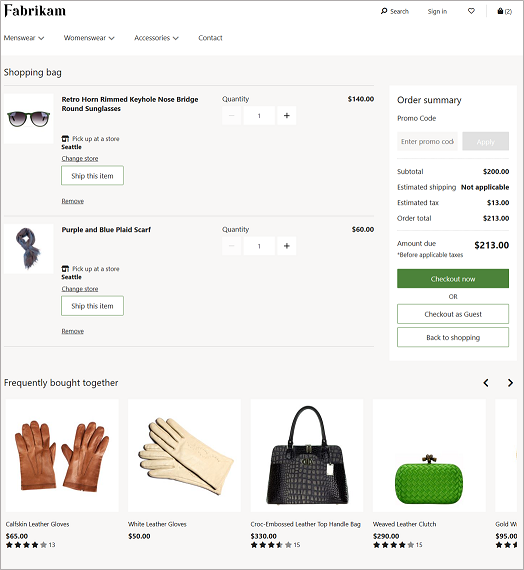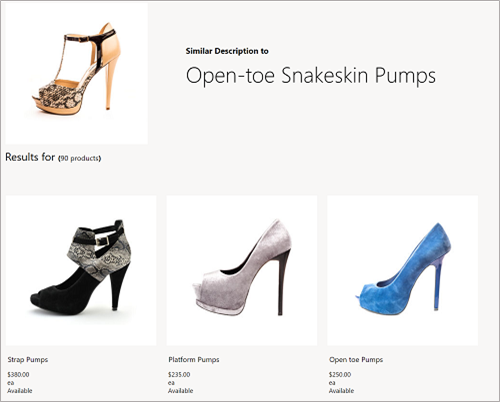Contextual recommendations lists
Sometimes, item-to-user (personalized) recommendations aren’t relevant enough. In this case, you can use user interactions with different items to also learn about item-to-item (contextual) relationships. Item-to-item relationships are one of the most important scenarios that recommendations can serve, because they power experiences such as:
Shopping by alternatives
Continuous engagement
Discovery and exploration
People also like
One of the most effective recommendations channels is the People also like (or buy) list, most commonly found on a Product details page.
People also like is based on explicit signals (transactional, recently viewed) and creates a strong relationship between items using information about other users’ consumption.
Examples of People also like:
Shoppers can see other handbags that users have also purchased in addition to the original product they're considering to purchase
Xbox games detail pages suggest other games users have downloaded
Suggest articles that other users have also read in addition to the current article

People also view
Another way to model items is by using an implicit view signal instead of an explicit action such as like or purchase. Using views, we can help users navigate through related or similar content. This experience allows users to see content that has been viewed but not explicitly interacted with by other users.
Examples of People also view:
Other people who have also viewed this item or service
Next articles to read
Frequently bought together (cart)
Frequently bought together is an upsell scenario based on items already placed in the shopping cart. This scenario is often called a "candy rack experience." This scenario learns from other, previously purchased (completed) baskets, and returns complementary products based on what's currently in a user’s cart. This scenario can be different from item-to-item relationships, because it can analyze the entire basket as an entity with meaning.
Examples of Frequently bought together:
Purchasing a laptop might suggest a charger, surface pen, or mouse
Purchasing sunglasses and a scarf might suggest gloves, a purse, or shirt
Purchasing eggs and milk might suggest cheese or chocolates

Visually similar recommendations
For some items, visual similarity might supply an added point of view rather than a collaborative filtering solution. Suppose a consumer is looking for a similar floral shirt pattern as one they’ve seen in the store. With Shop similar looks, Intelligent Recommendations can use content images to detect products with similar visual attributes that deliver a different item-to-item experience to the user.
Examples of Shop similar looks:
Shop similar looks
Fashion and designer shopping
Complete the look
In this image, you can see that the results now return gradient patterns similar to the starting item.

Textually similar recommendations
Sometimes, content images can look the same (such as a bottle of wine), and comparison by visual similarity isn't applicable. When there's a rich, textual description of a product, a textual similarity can be generated. In this case, Intelligent Recommendations can train a neural network to understand the written text used for item descriptions. For these customers, our models supply relevant recommendations by understanding and interpreting text as an alternative similarity space.
Examples of Textually similar recommendations:
Suggest wine by its description
Vacation locations
Article recommendations

See also
Fine-tune results
Use personalized recommendations lists
Provide trending recommendations lists